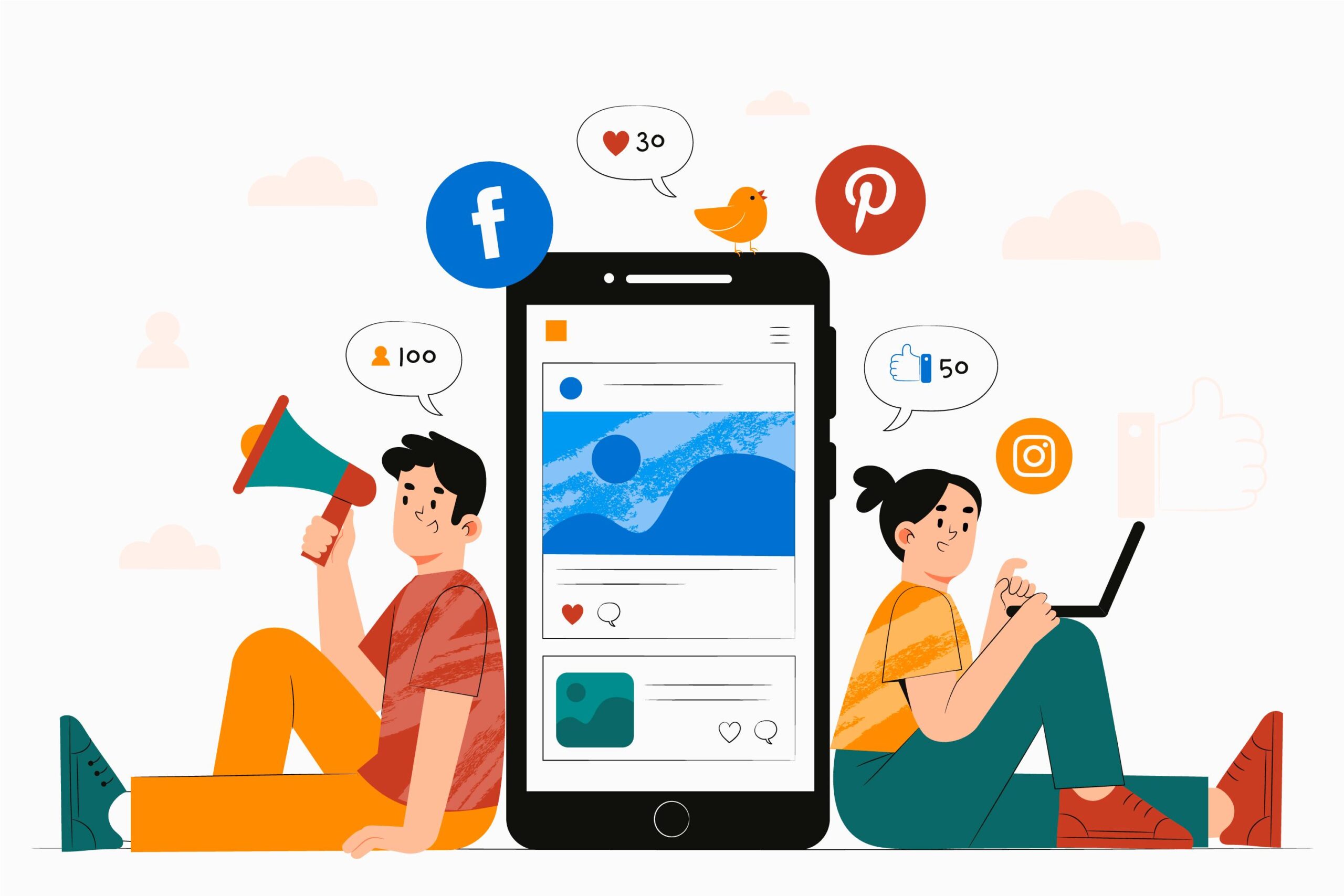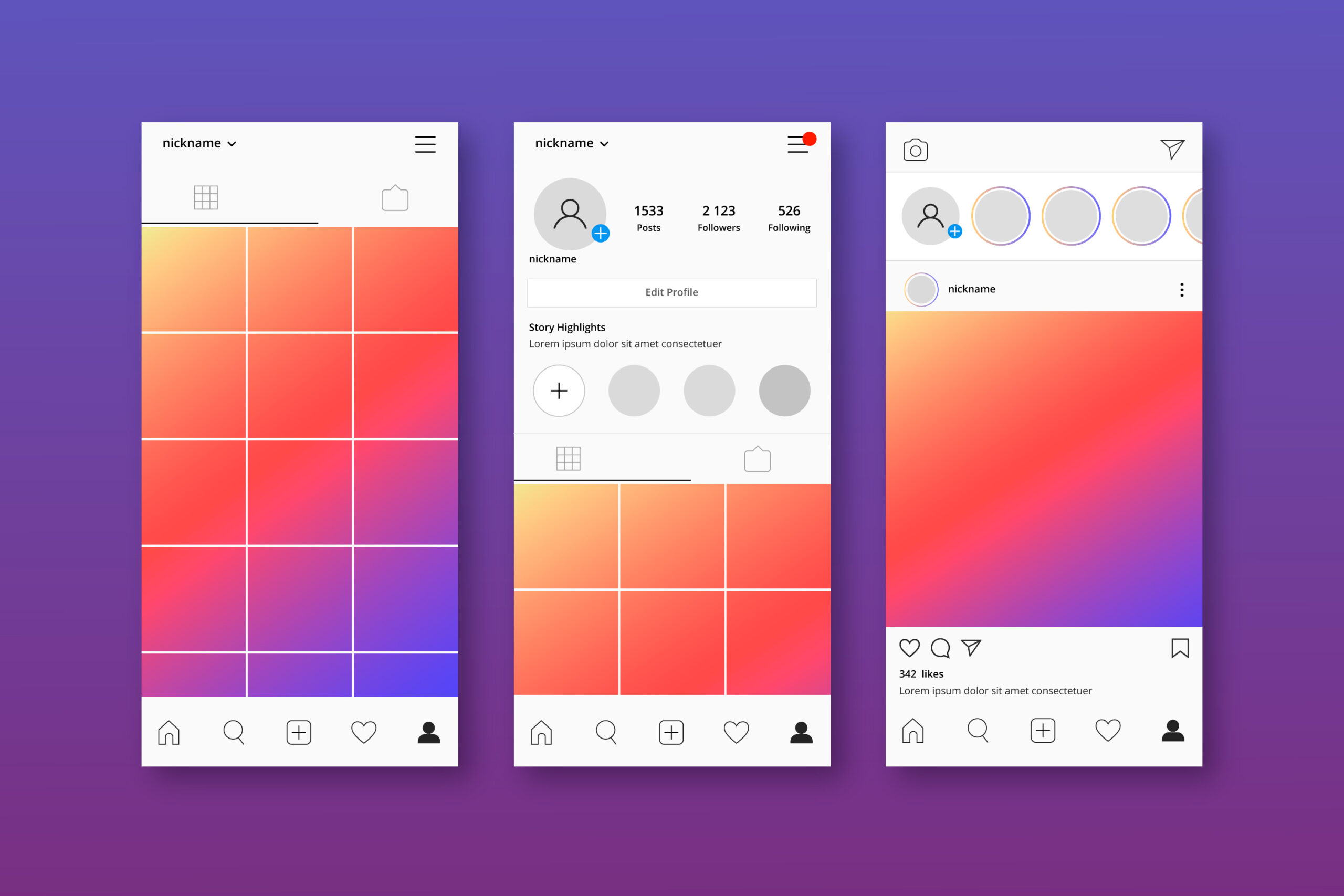Memes are native on social media platforms. They are funny, entertaining, and easy to consume. But there is more to them than meets the eye as Richard Dawkins repeatedly said.
Meme marketing is an understated trend on social media that’s quickly becoming popular.
Meme marketing is a form of digital marketing that uses memes to promote a product or service. Memes are popular on social media platforms because they are funny, entertaining, and easy to consume.
Memes have been used for marketing purposes for more than a decade. They were first used as a form of viral advertising by the company Blendtec in 2006 when they created an advert which showed their blender destroying an iPad.
The use of memes has changed since then, with the most common use being as part of an influencer’s personality-driven content strategy. Memes are also often used when targeting millennials who spend much of their time on social media sites like Facebook and Instagram.
How Are Brands Using Memes for Marketing?
An average person spends an hour and a half every day on social media. And memes are the language in which people on social media communicate new ideas and attitudes.
So, it’s not surprising that memes have become a cultural phenomenon. Grumpy Cat, Good Guy Greg (GGG), and LOLcats all have one thing in common — they’re all meme characters that are now a part of internet pop culture and meme culture in general.
They’ve been used in different ways to spread various ideas. They do so by building on the social media appeal of cat videos and making them even funnier.
Meme marketing can breathe new life into your social media strategy. Memes are highly visual, making them a great tool to create social media fodder and add to your content marketing strategy.
The best part of meme marketing is that you can simply take a concept that is already gaining traction and piggyback on its popularity. With memes, there is no such thing as plagiarism.
Creating funny memes gets simpler with image editor and animation maker tools such as PixTeller. This design tool allows you to create animated GIFs, quote pictures, and video stories with easy-to-use templates.
You can capitalize on a trending meme and customize it with your branded content to engage your target consumers with an entertaining media strategy.
With the least amount of effort, your share-worthy memes can get you likes, shares, and comments. When you post them on your blog, you can reap the benefits of increased inbound links and website traffic as well.
No wonder brands are jumping in on the meme marketing bandwagon.
Are you looking for real-life meme marketing examples?
Here are a few brands that have been marketing with memes:
1. Gucci
Gucci is a luxury fashion brand that’s built an image around sophistication and grace. But for their 2017 #TFWGucci campaign, they decided to shatter all preconceptions about their brand. With memes, they showed their target audience that they could be hip.
What was their #TFWGucci campaign all about?
#TFWGucci, which is short for “That Feeling When Gucci,” was a campaign designed to promote their new line of watches.
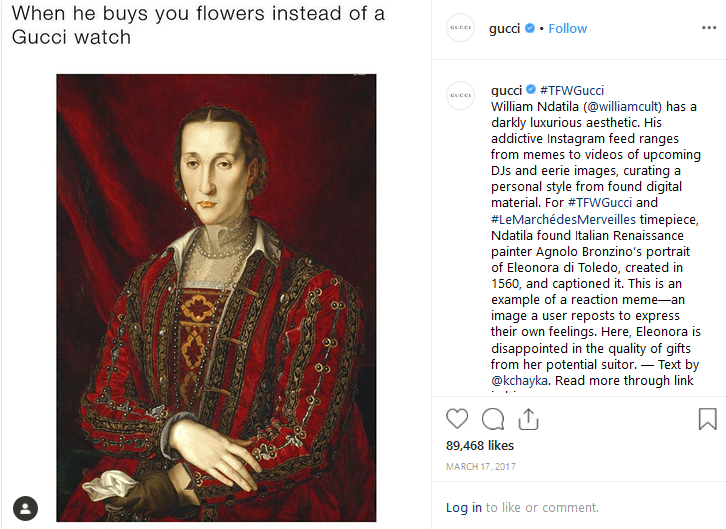
Image via Instagram
In a series of relatable memes, Gucci used memes that ranged from absurd to hilarious. They created all of the memes in collaboration with artists from around the world.
The landing page for the campaign even featured an explainer video on the history of memes for those who were new to the concept. The descriptive captions paired with edgy graphics gave Gucci a refreshing brand makeover.
2. Seamless
Seamless, the popular online food delivery service in the U.S. often uses humor on social media to connect with their audience.
In 2014, they came up with a creative concept for marketing memes. They created a series of memes based on nominations for Academy Awards. Called the #OscarNomNoms, Seamless’ meme-series created quite a stir on Twitter.
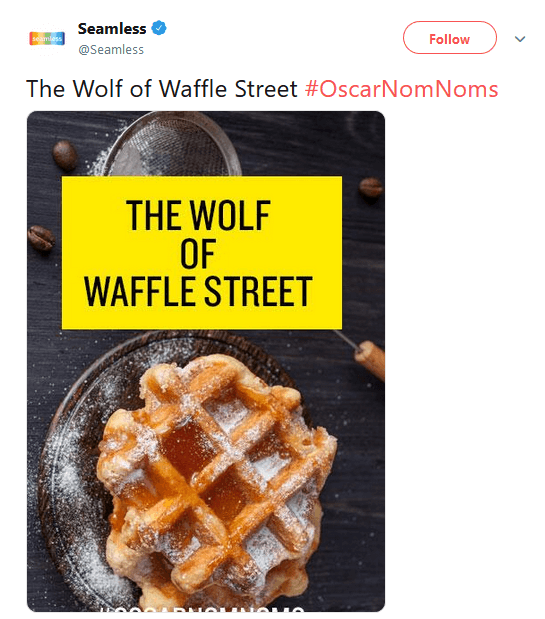
Image via Twitter
They re-imagined and designed movie posters to include some crazy food puns. American Hustle became “American Muzzles,” while The Wolf of Wall Street became “The Wolf of Waffle Street.”
What were the results of the meme marketing campaign?
Needless to say, the #OscarNomNom series won the internet. Their memes went viral for two reasons — timeliness and good puns.
The Academy Award nominations were just announced, so obviously, there was a lot of curiosity around them. By leveraging a popular trend, Seamless was able to position itself as a brand that could make people laugh.
3. BarkBox
New York-based subscription service, BarkBox, has over 600,000 monthly subscribers for their dog products and services. The one thing that their target audience has in common is their love for dogs.
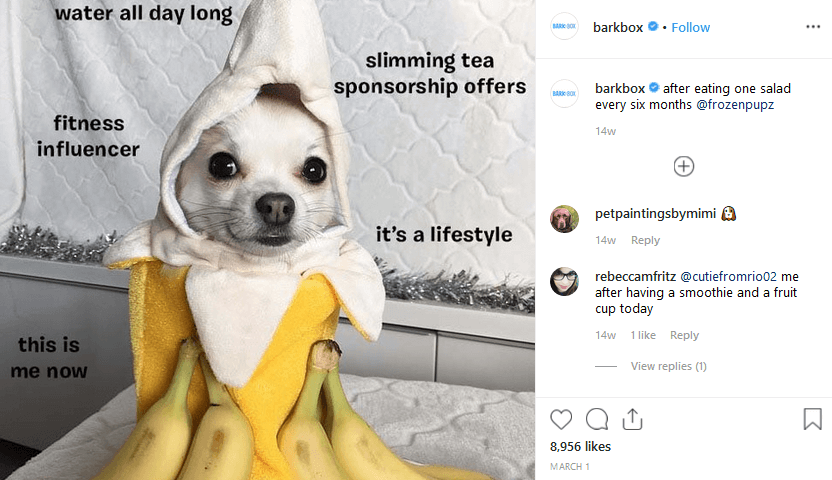
Image via Instagram
BarkBox recognized this and they leveraged dog memes in their marketing strategy to engage their audience. Instead of promoting their products, they use memes to bring the whole community of pet lovers together.
Because of the relatability of their memes, their followers often tag their friends and comment on the social media posts.





